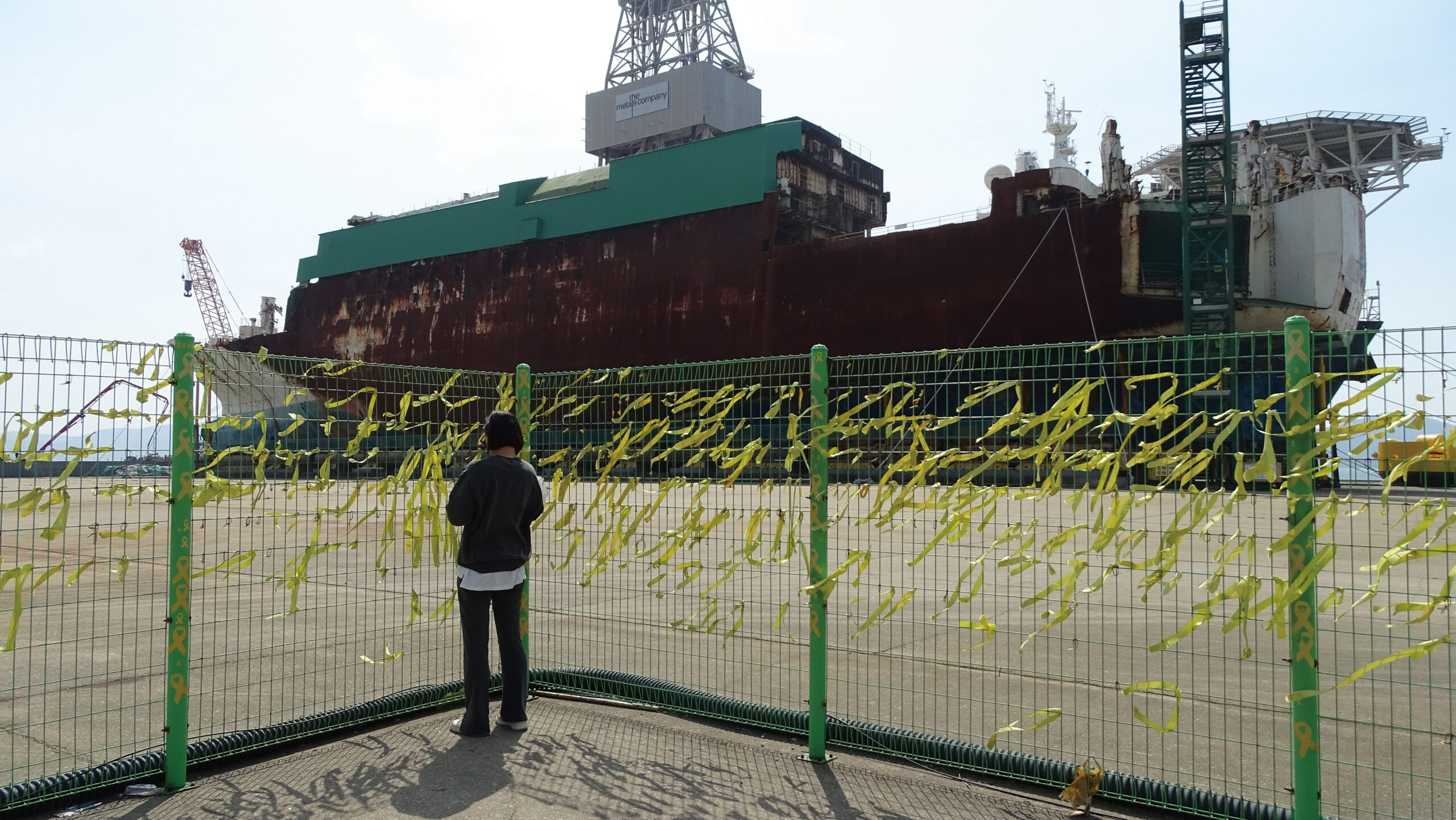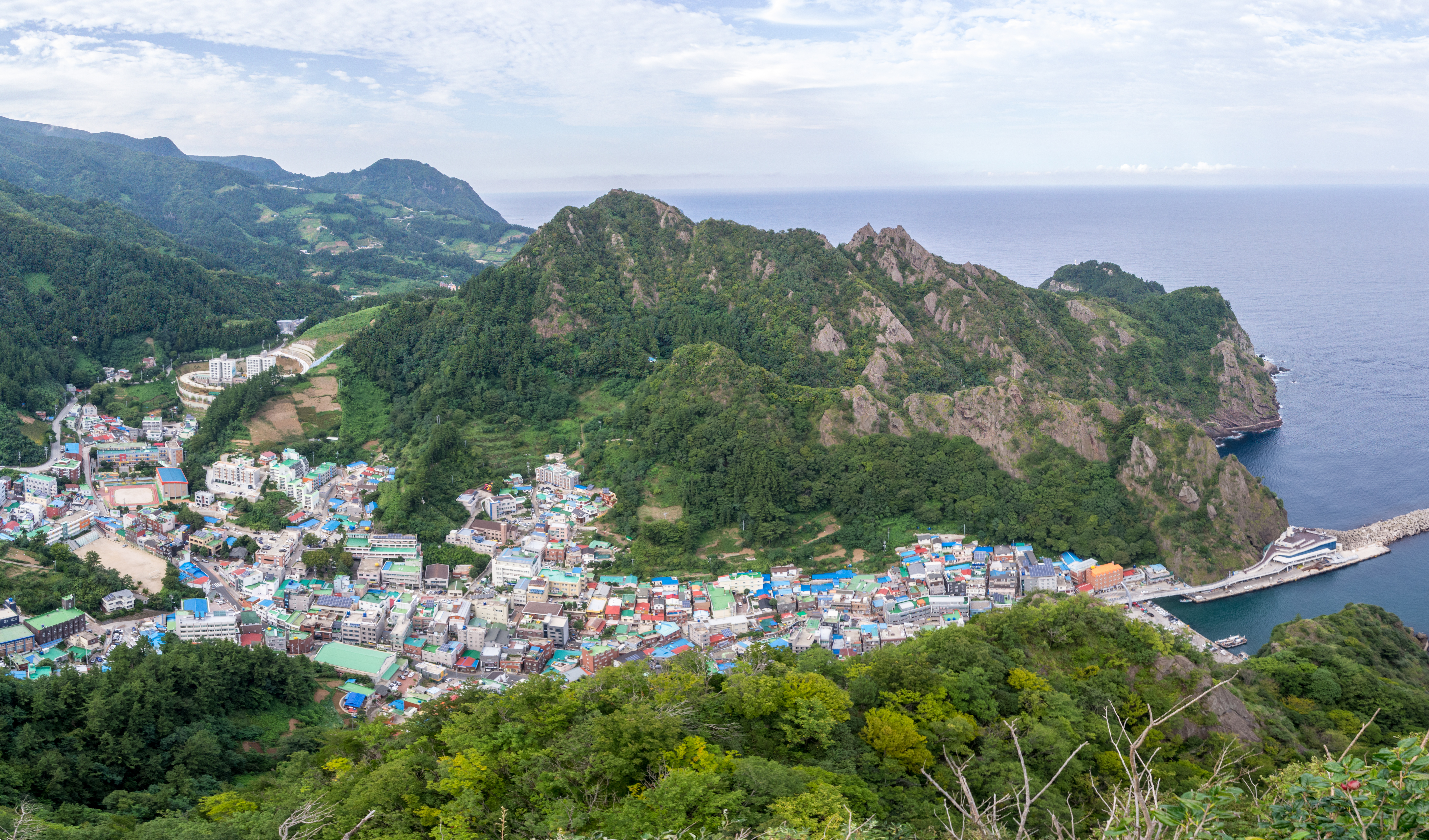A Mystery Still Untouched: Ulleung-do
Written and photographed by Wilson Melbostad.
A Korean destination that had been on my radar for quite some time was the volcanic island (not named Jeju) located far off Korea’s east coast. Nicknamed “Mystery Island” for the mystical energy it contains, scientists theorize that the cryptic isle first sprang from the sea following eruptions that took place 2.5 million years ago. No problem if there are no mental lightbulbs springing into action at this point (or if you skipped the title) – I will spill the beans: I am talking about Ulleung-do. Though a lot of folks think of Ulleung-do as just a stopover to get to the better-known Dok-do islands (which I admittedly also partook of during my recent adventure), Ulleung-do also boasts rural beauty unlike anything else you will see in Korea.

Probably one of the biggest reasons the island does not hit the top of the tourist destination charts is that it is simply very difficult to get to. Ferries from the mainland depart once, maybe twice, a day, depending on the season, from either Gangneung in Gangwon Province or Pohang in Gyeongsang Province, and both trips sport a travel time of about three hours plus. If the seas are too choppy, the boat simply stays in port and travelers are either forced to wait another day on the mainland or, if already on the island, remain stranded for an extra day on Ulleung-do. Thankfully, my traveling buddy and I faced few to no issues during the maritime portions of our journey; that included a lack of seasickness, which has been known to creep up on passengers in transit.
Once one arrives at the main Dodong Port, getting around Ulleung-do is possible via either rental car or local buses that circle around the perimeter of the island. If time is not a factor, then a car is not an “absolute must.” I enjoyed our rental car experience, as it did certainly enable us to explore some of the lesser-known areas of the island and, as one might imagine, cover more ground in less time. If you do select the bus option, just be prepared for them to stop running much earlier than you might have become accustomed to in Gwangju or elsewhere in Korea.
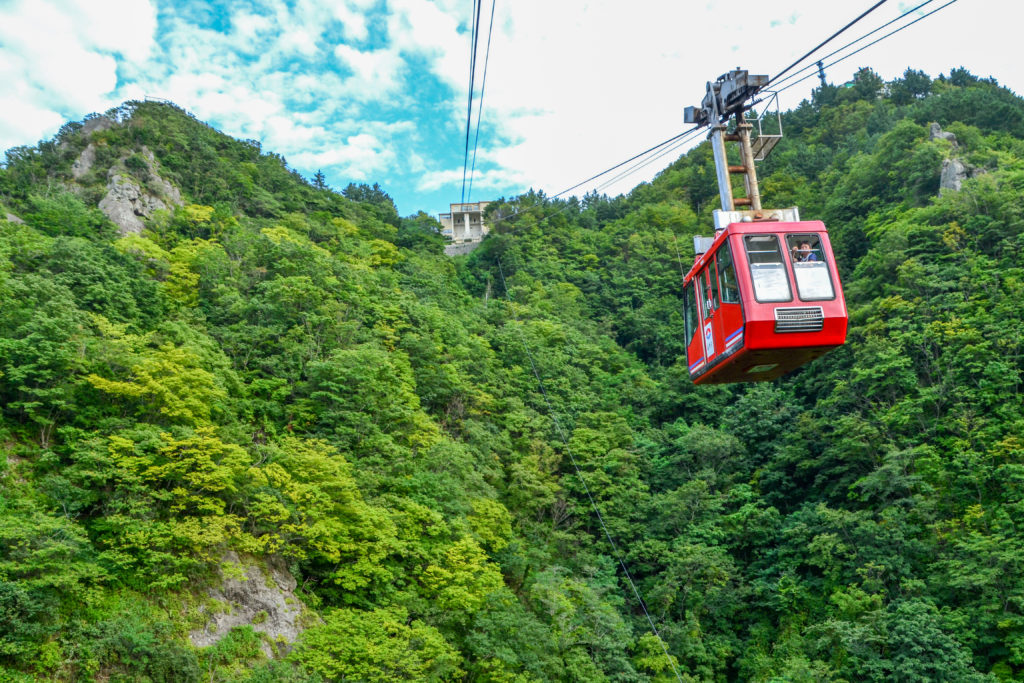
The cable car up to Manghyang Peak.Ulleung-do activities can be split into two categories – eating and hiking – both of which we got our fair share of. For the active folk, climbing up Seongin-bong, the large volcanic mountain in the middle of the island, provides a tough but rewarding challenge. Towards the peak of the mountain, the plant life begins to resemble a backdrop one might expect to see in the jungles of Indonesia or elsewhere in Southeast Asia. These “are we sure we’re in Korea?” questions continued on from the top of the mountain back down through the Nari-bunji (or Nari Basin), with unfamiliar flora springing up every which way, eliciting motifs of the Mesozoic Era. Other must-visit geological attractions include the Gwaneum Island hiking trail, an easy stroll that provides a solid coastal view of Ulleung-do’s unique, almost fjord-like geological foundation.
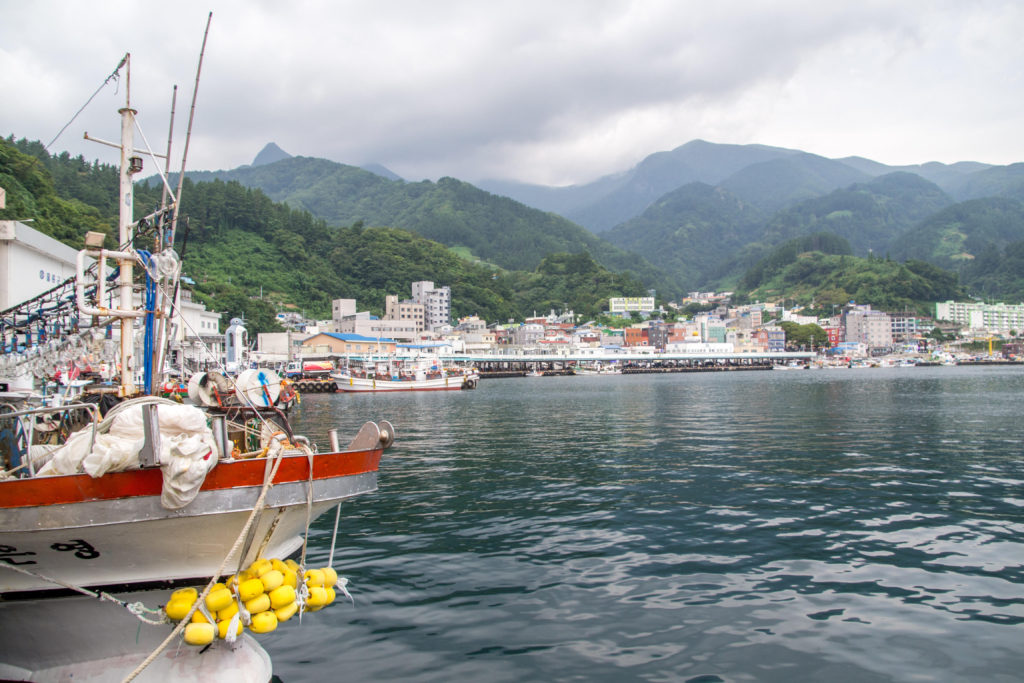
A view of a squid boat docked at Jeodong Harbor.On the culinary side, dip into your wellbeing side with a taste of sanchae bibimbap (mountain bimbimbap) at the bottom of Nuri Basin. Ulleung-do is very well known for its wild mountain vegetables, with a selection of more than 700 varieties that attract gastronomical experts from Korea and beyond. What is the secret to the freshness? Though Ulleung-do gets more snow than any other part of Korea, the mountain vegetables still flourish as they are able to absorb rich minerals from the wind, sea, and volcanic soil. Additionally, the lucky cows that get to graze on this heavenly vegetation, as one might imagine, lend themselves to some fairly tasty bulgogi combinations.
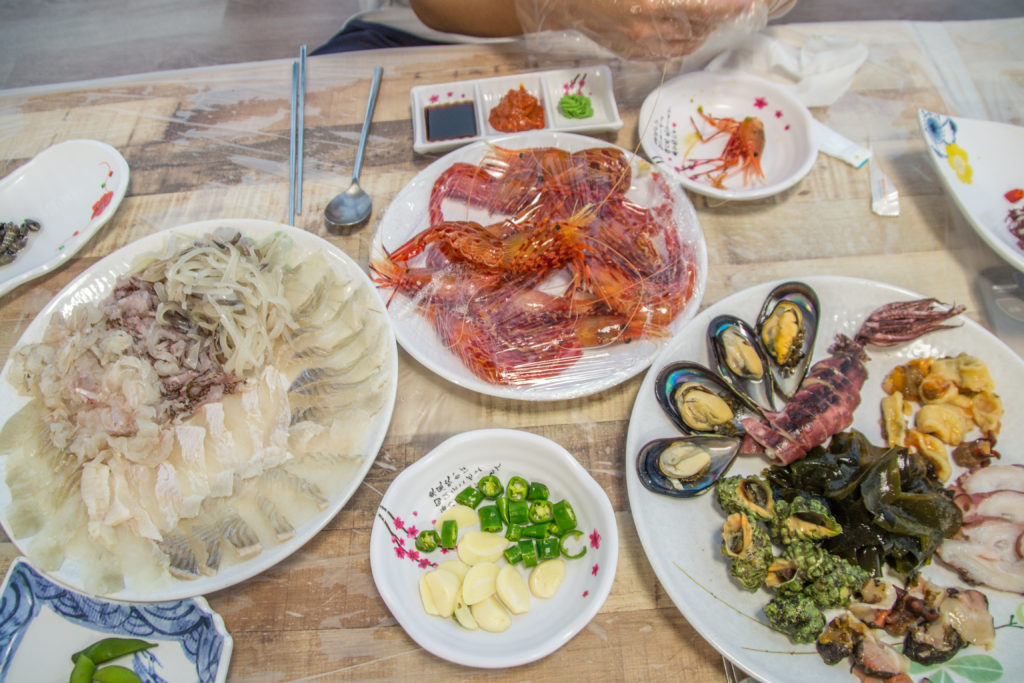
If you are the type of guy or gal who lives for introducing your digestive tract to underwater creatures, Ulleung-do also has a home for you. The ocean depths surrounding Ulleung-do range from about 50 to 300 meters. This means that the surrounding fauna are living far more illustrious lives than their shallow-sea counterparts, and thus, you the consumer are able to wolf down some heavenly seafood. Squid are a particular staple here, and you can find laundry racks of them drying in the sun at nearly every turn. But perhaps an even tastier treat is the “Dok-do shrimp,” which are found to be sweeter and softer than any other shrimp found in Korea. Though a little aggressive on the wallet, I must say that diving into these seafood experiences is something one just has to try while dining on “Mystery Island.”
My parting advice: Visit now while you can. The island’s mystique might be seriously compromised in the year 2025 when the official Ulleung-do Airport will be opened. Though residents have understandably called for an easier way to get to the mainland and/or have their relatives visit, Ulleung-do’s charm is preserved by the fact that it is so darn difficult to get there. Yet, since airport construction is already underway, I strongly suggest getting out there now while there is still time to experience the island in all its glory.
The Author
Wilson Melbostad is a human rights attorney hailing from San Francisco, California, and is proud to call Gwangju his second hometown. Wilson is a lecturer at Chonnam National University who, in his spare time, works on various pro bono legal cases throughout the country. Wilson also enjoys breakfast food to the point where he feels comfortable putting such information in his bio.





